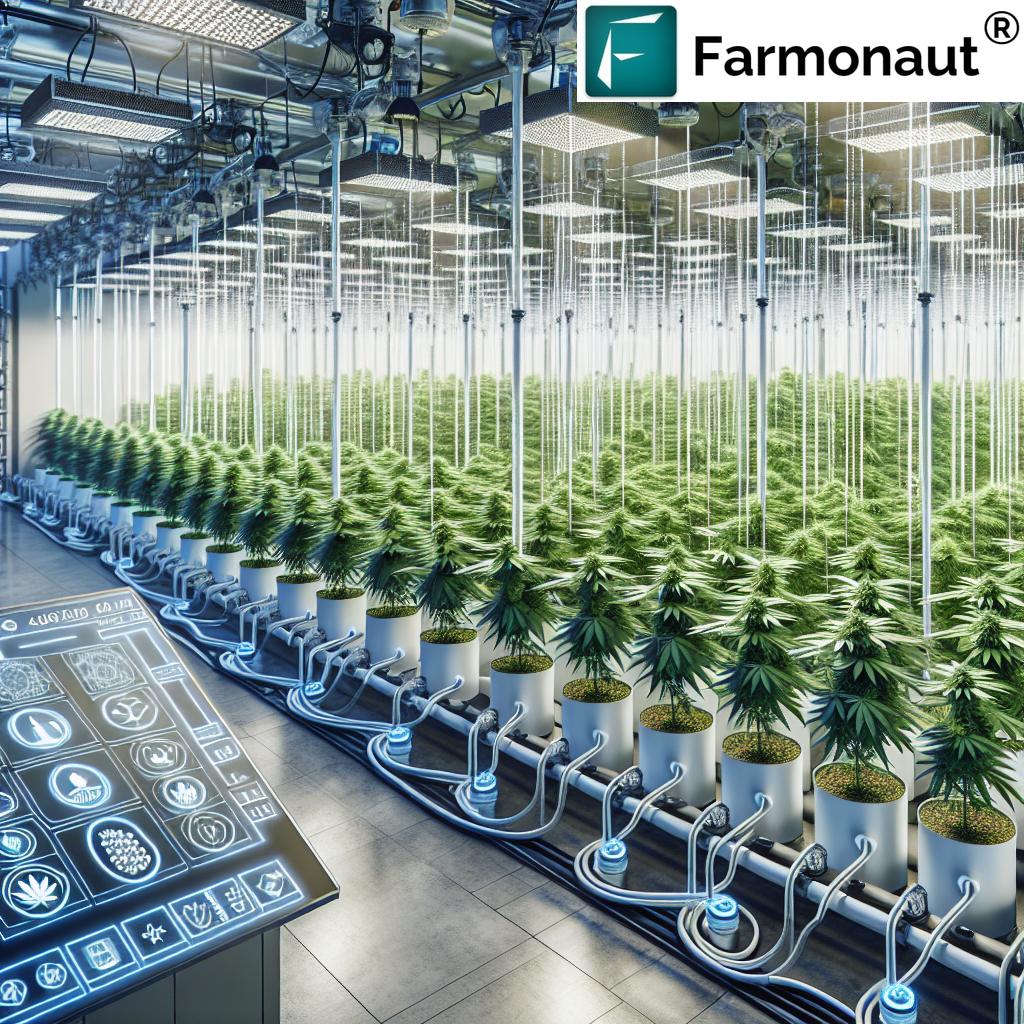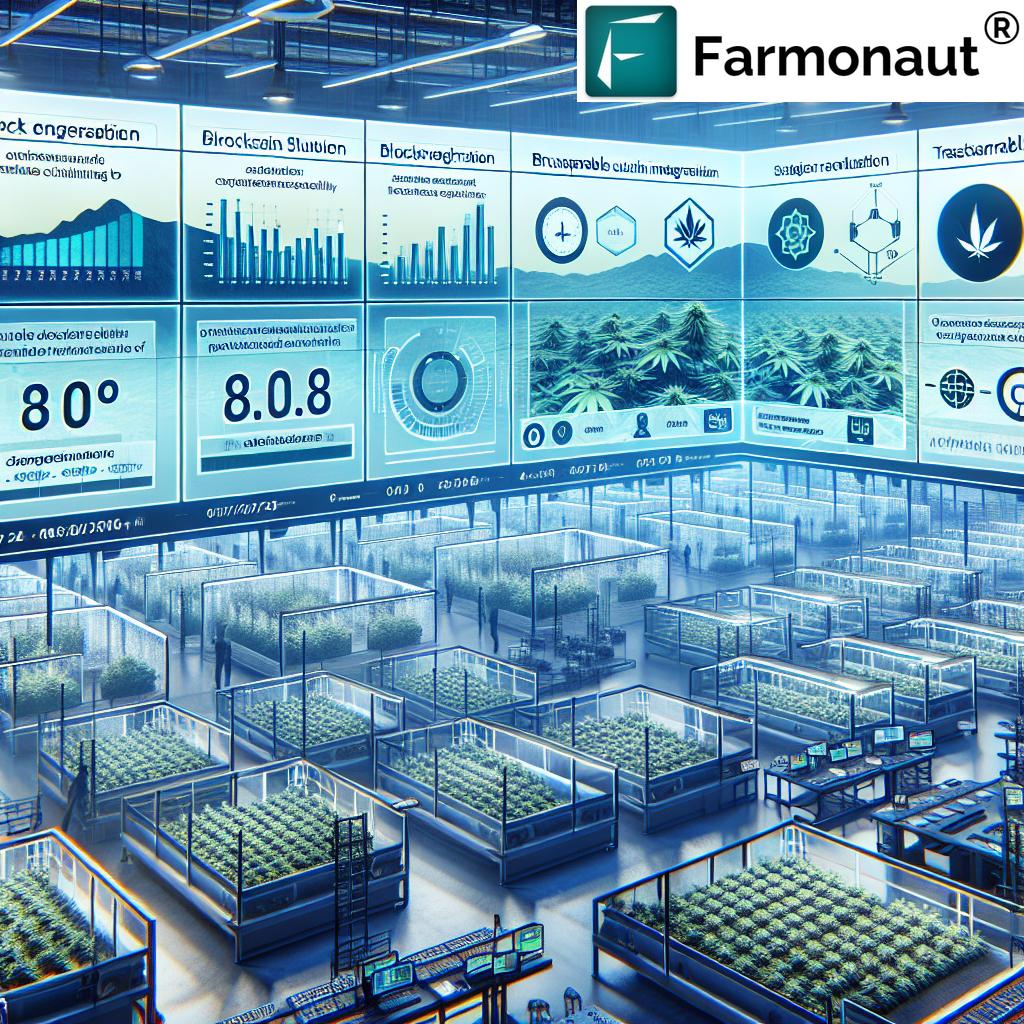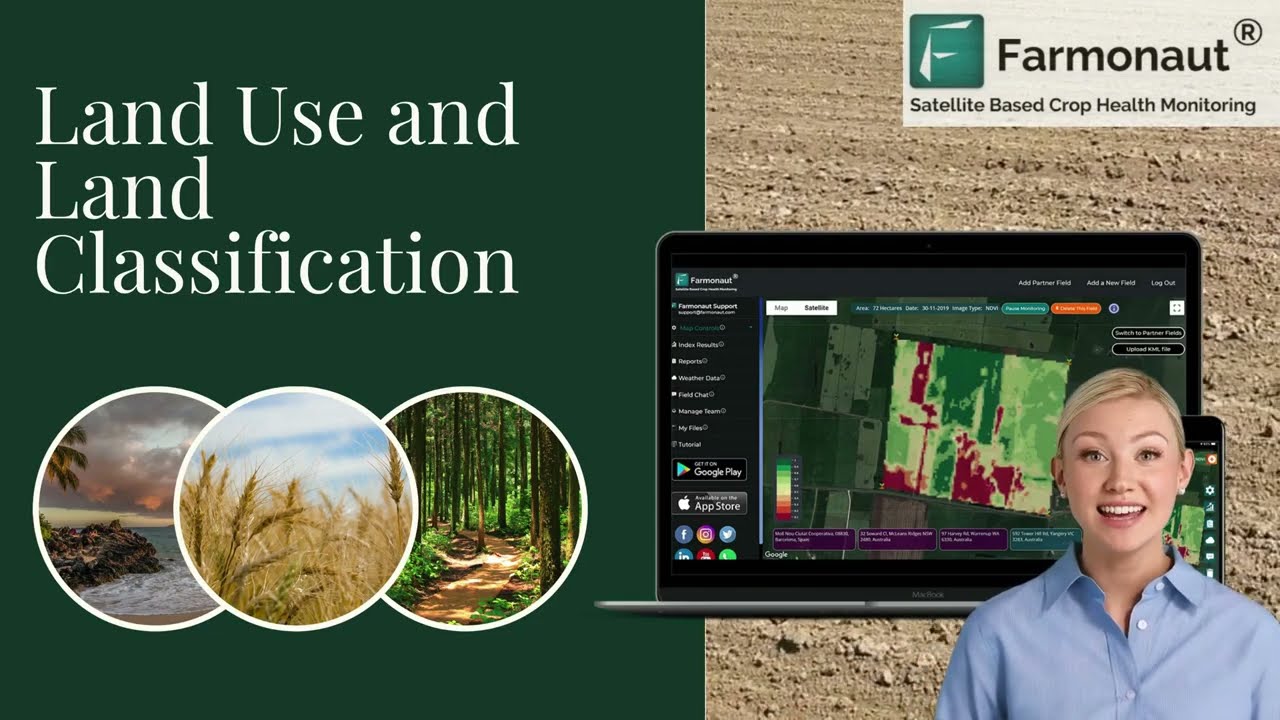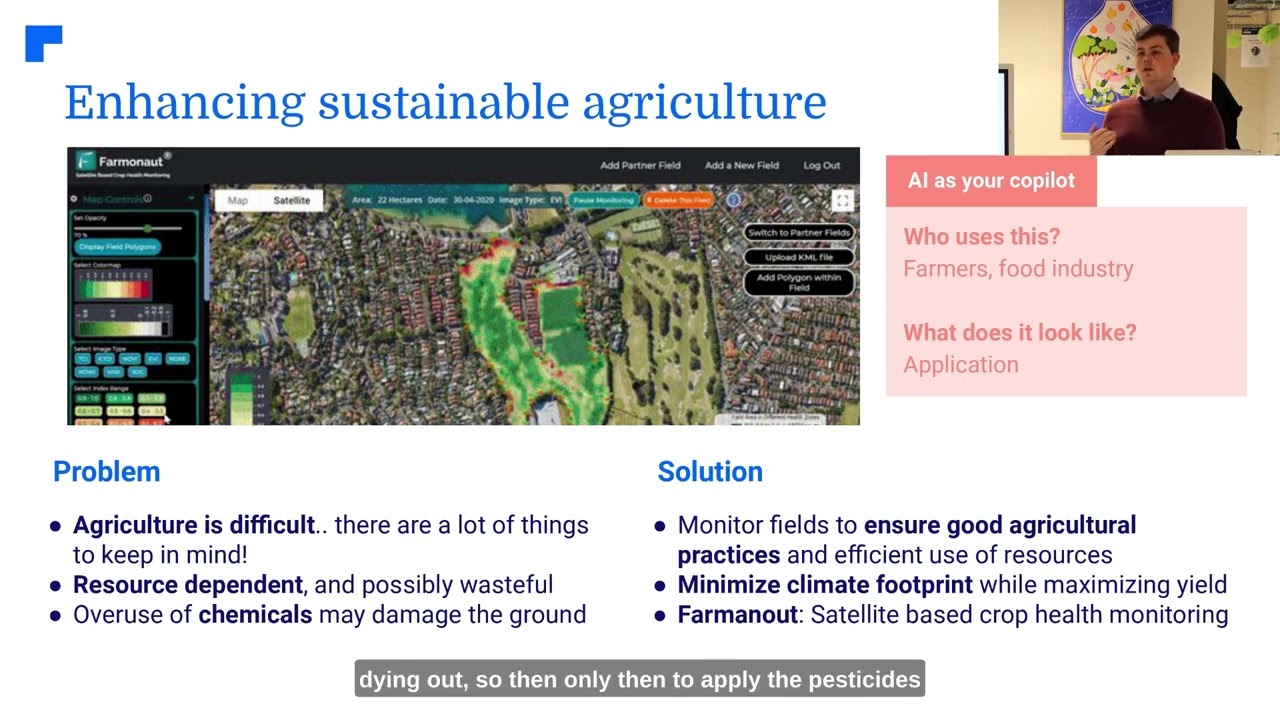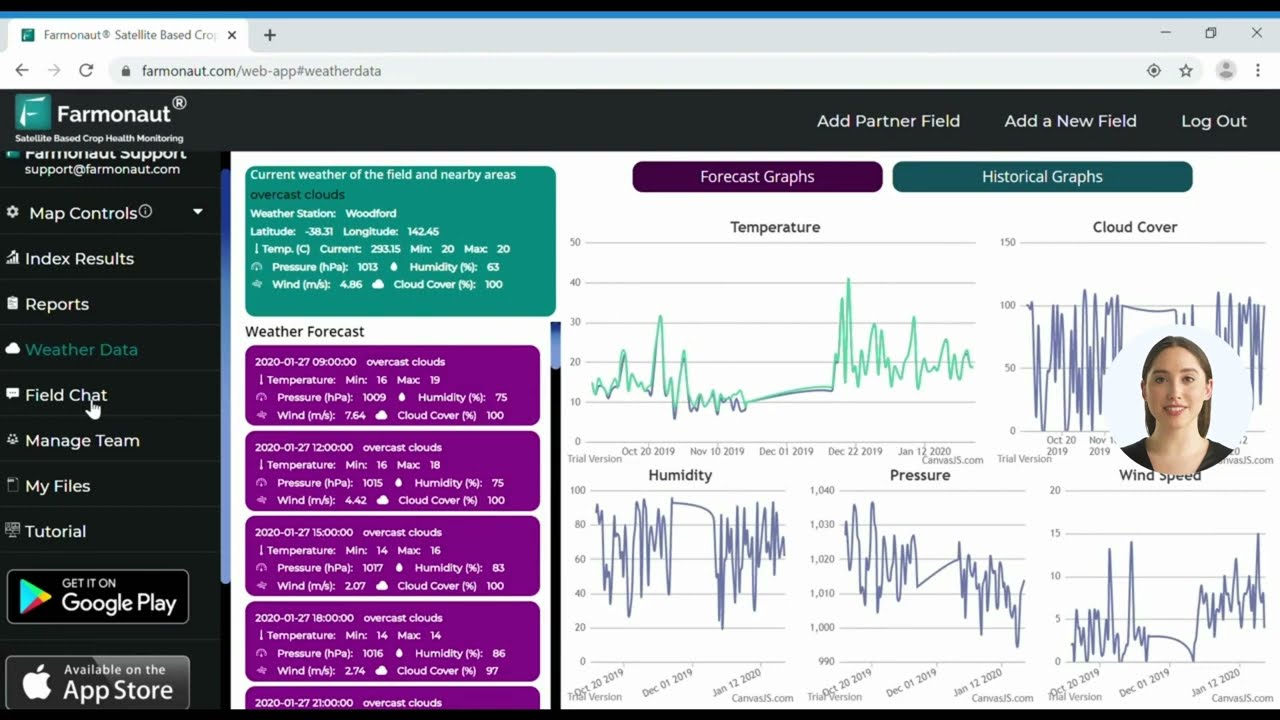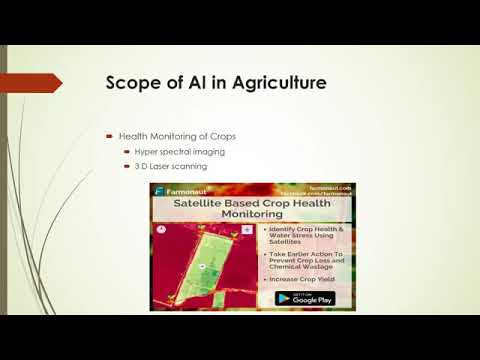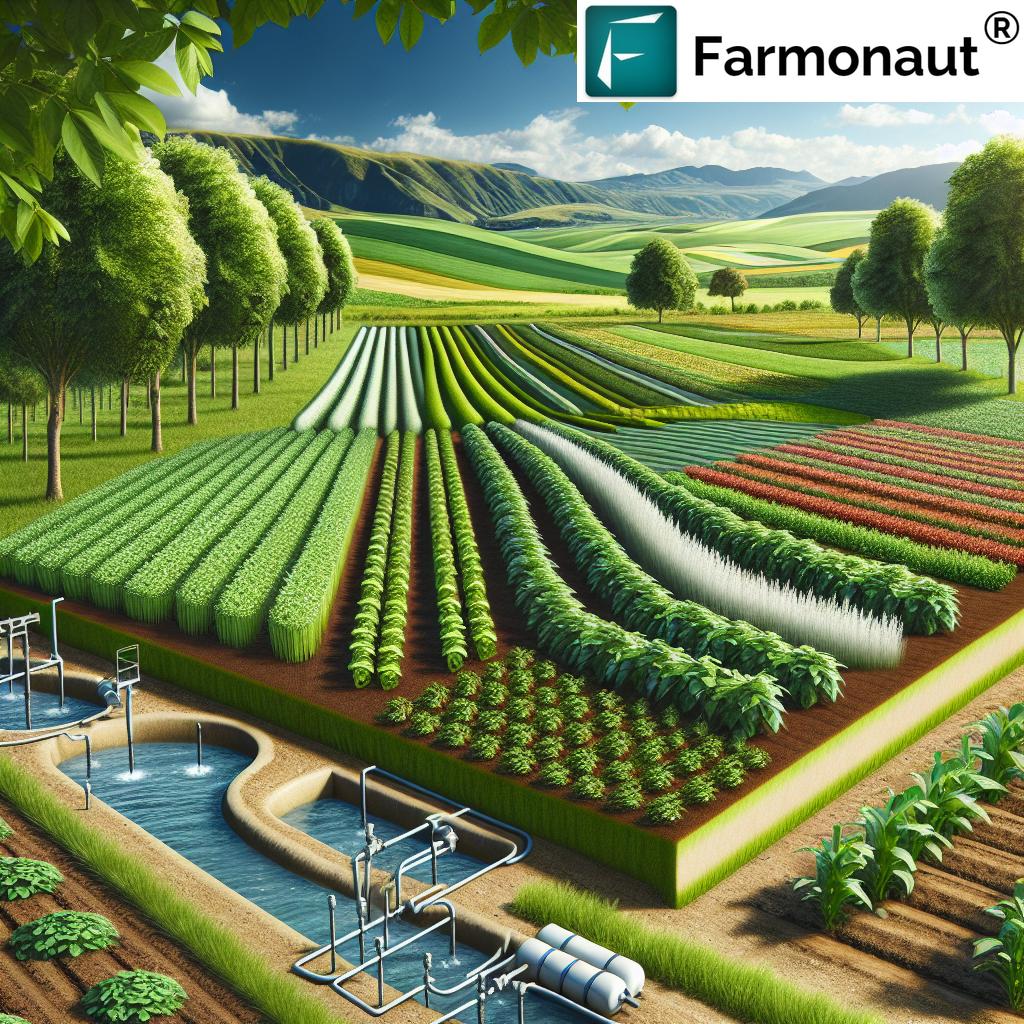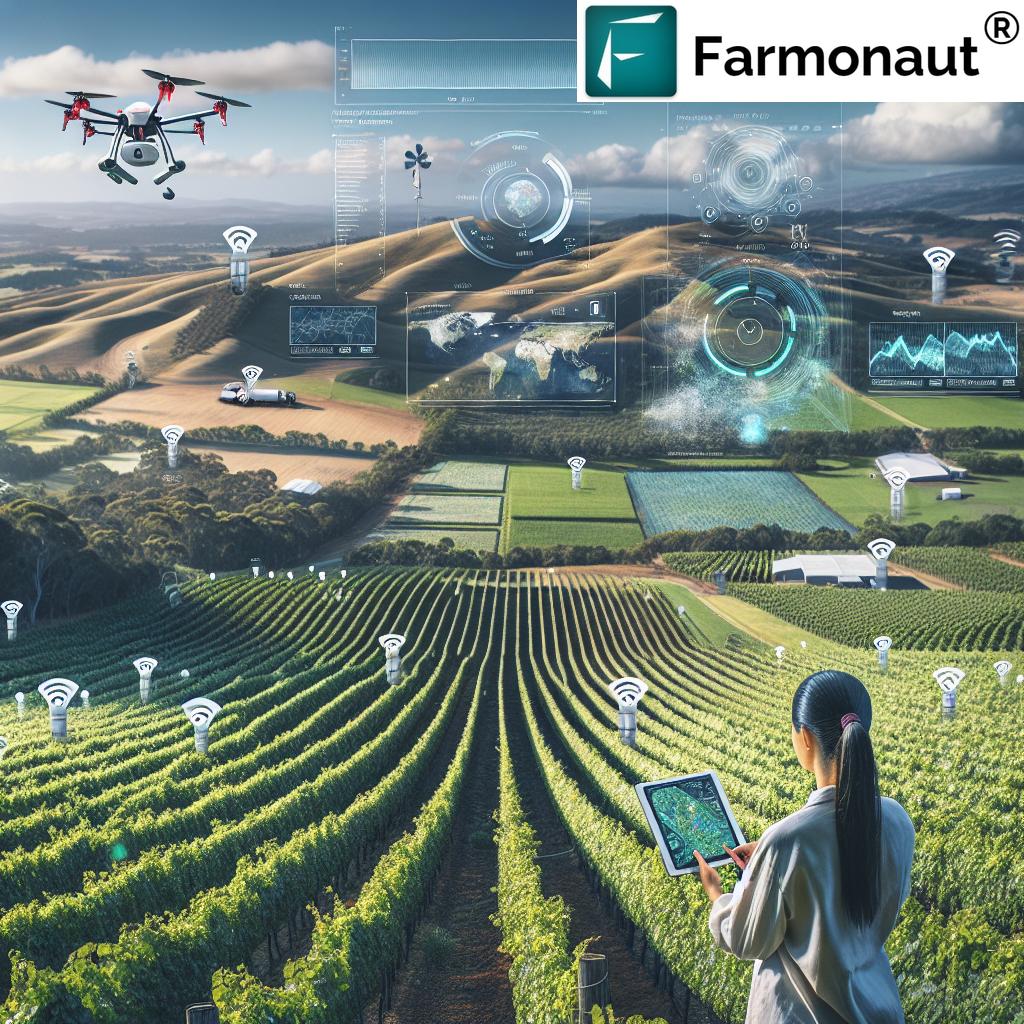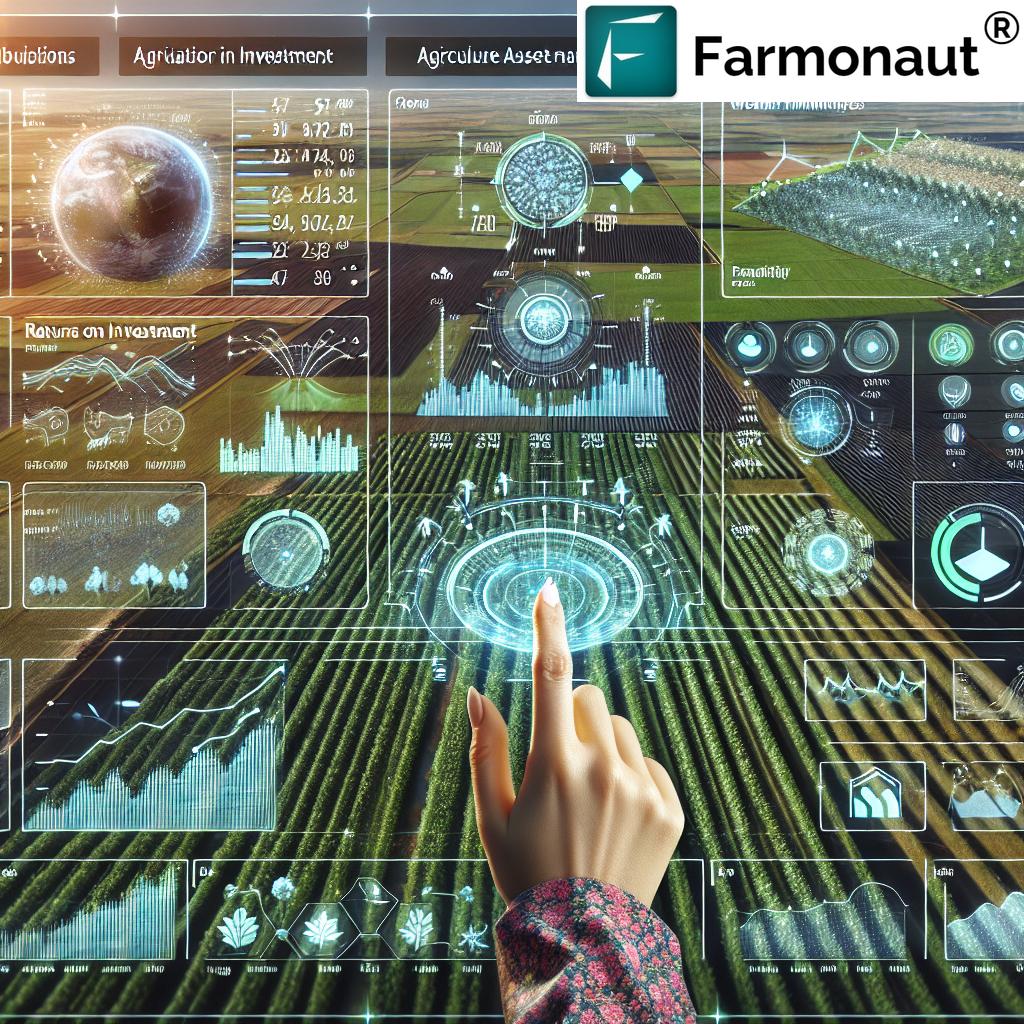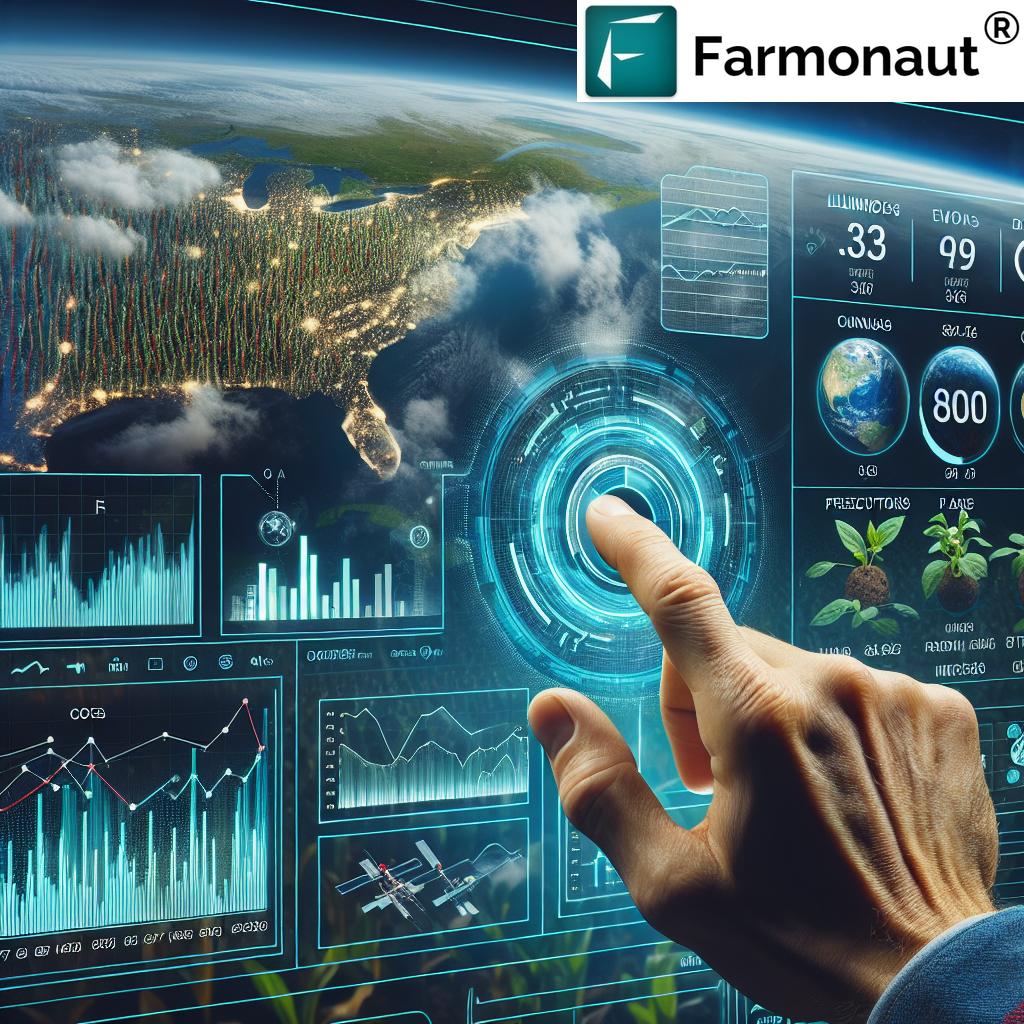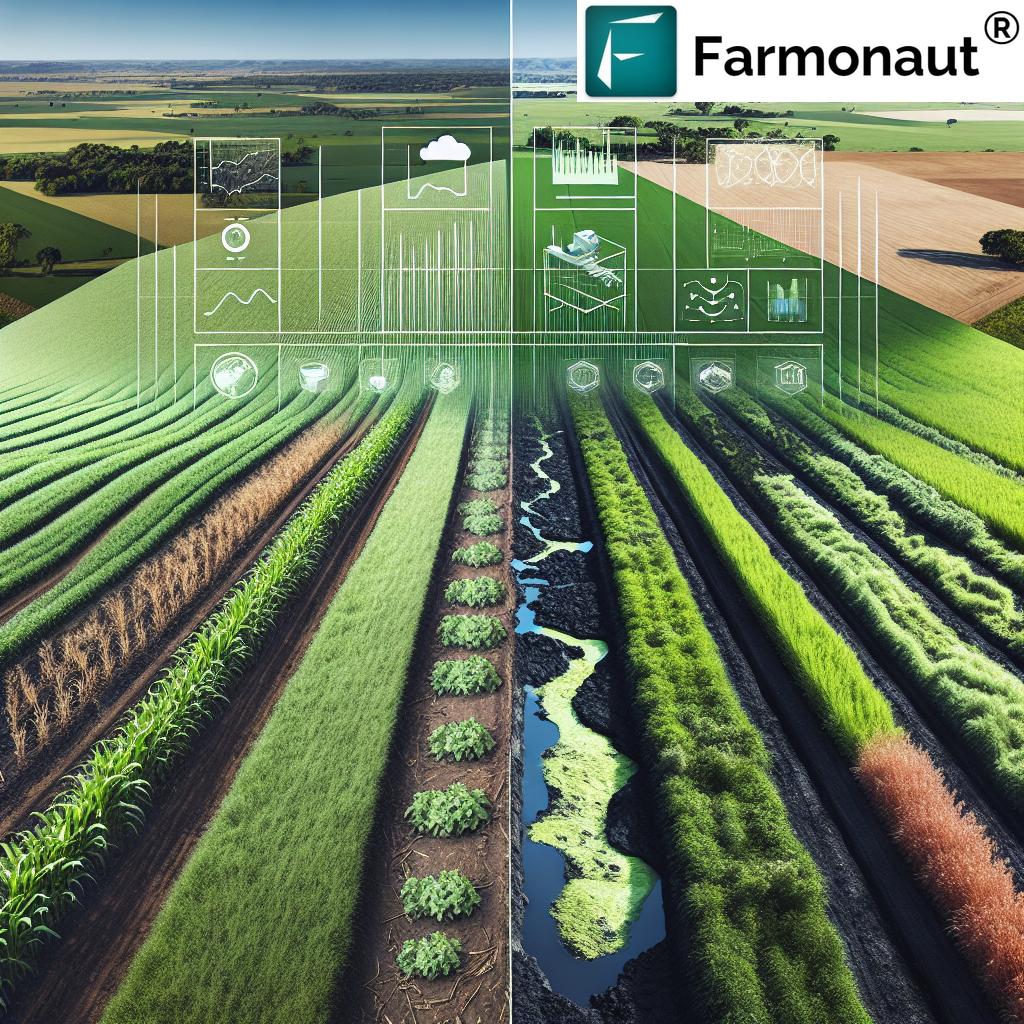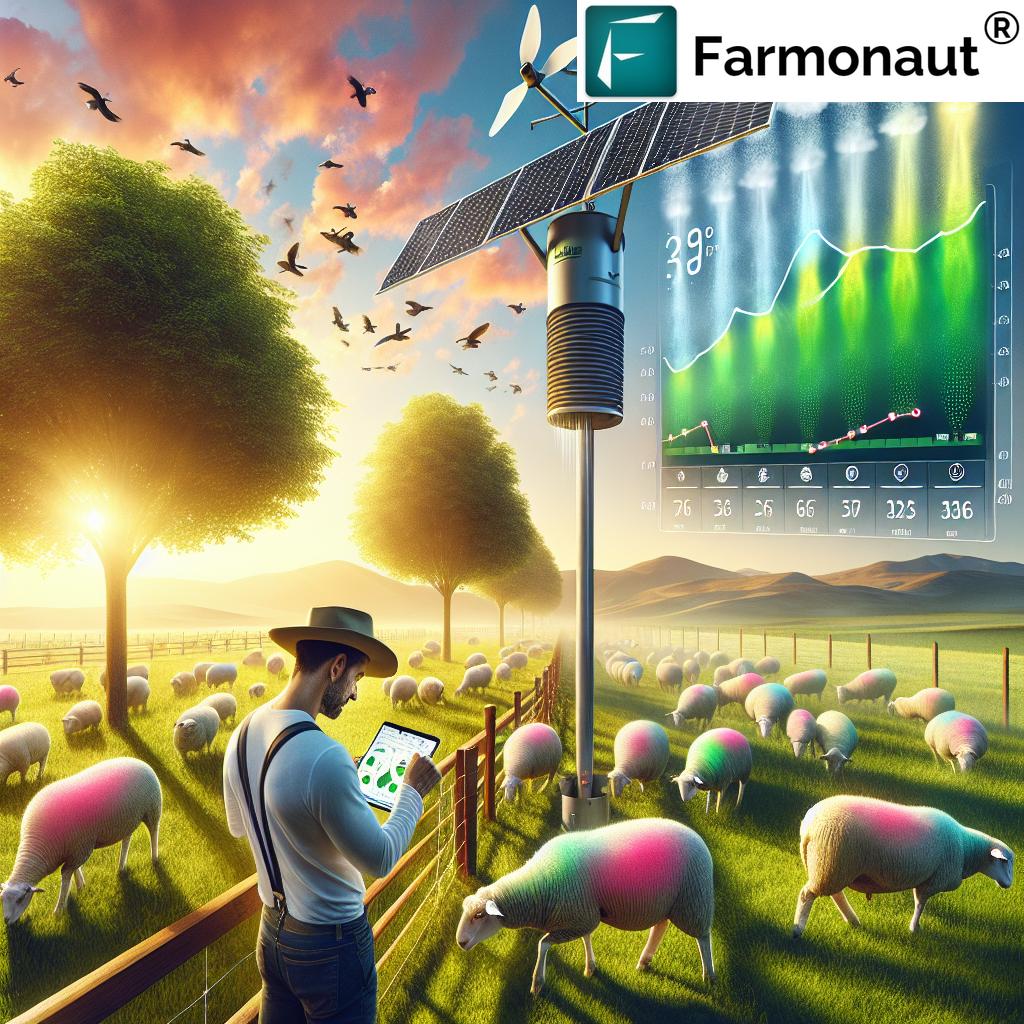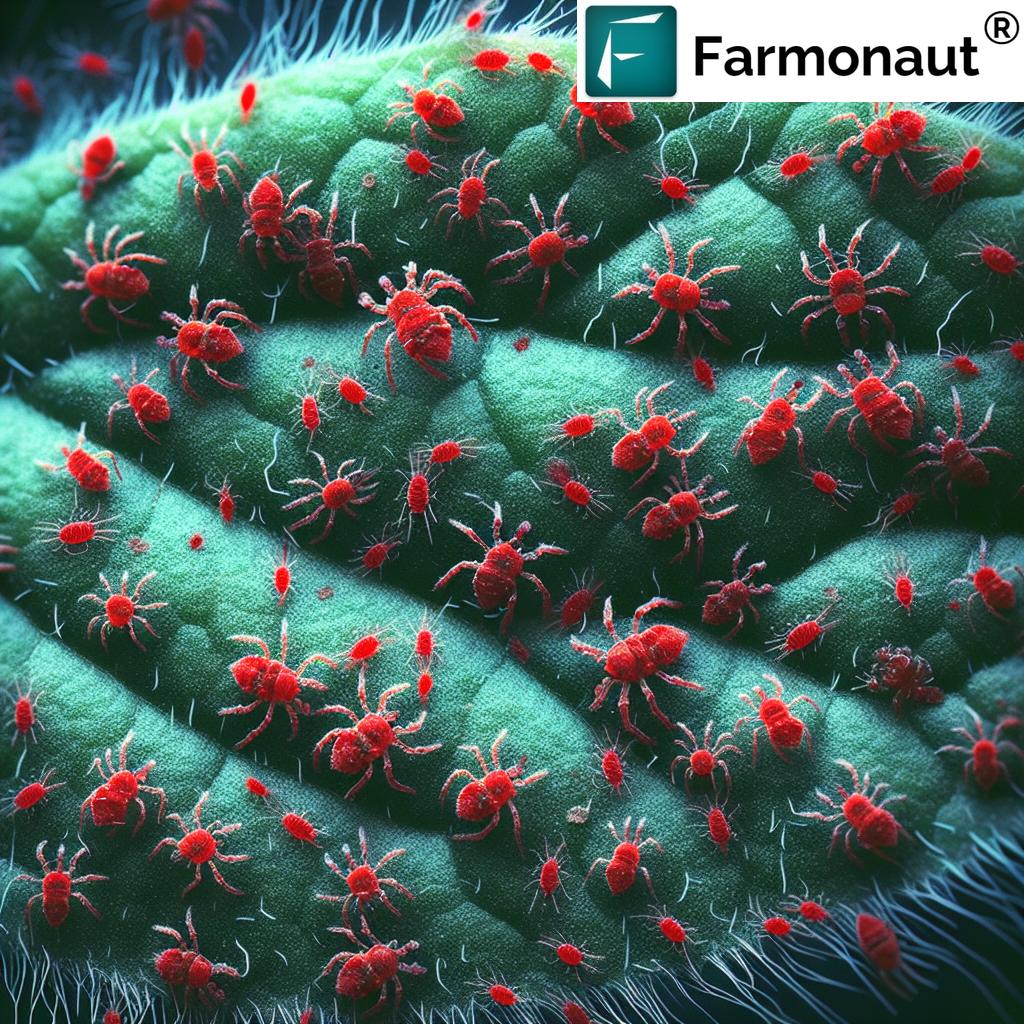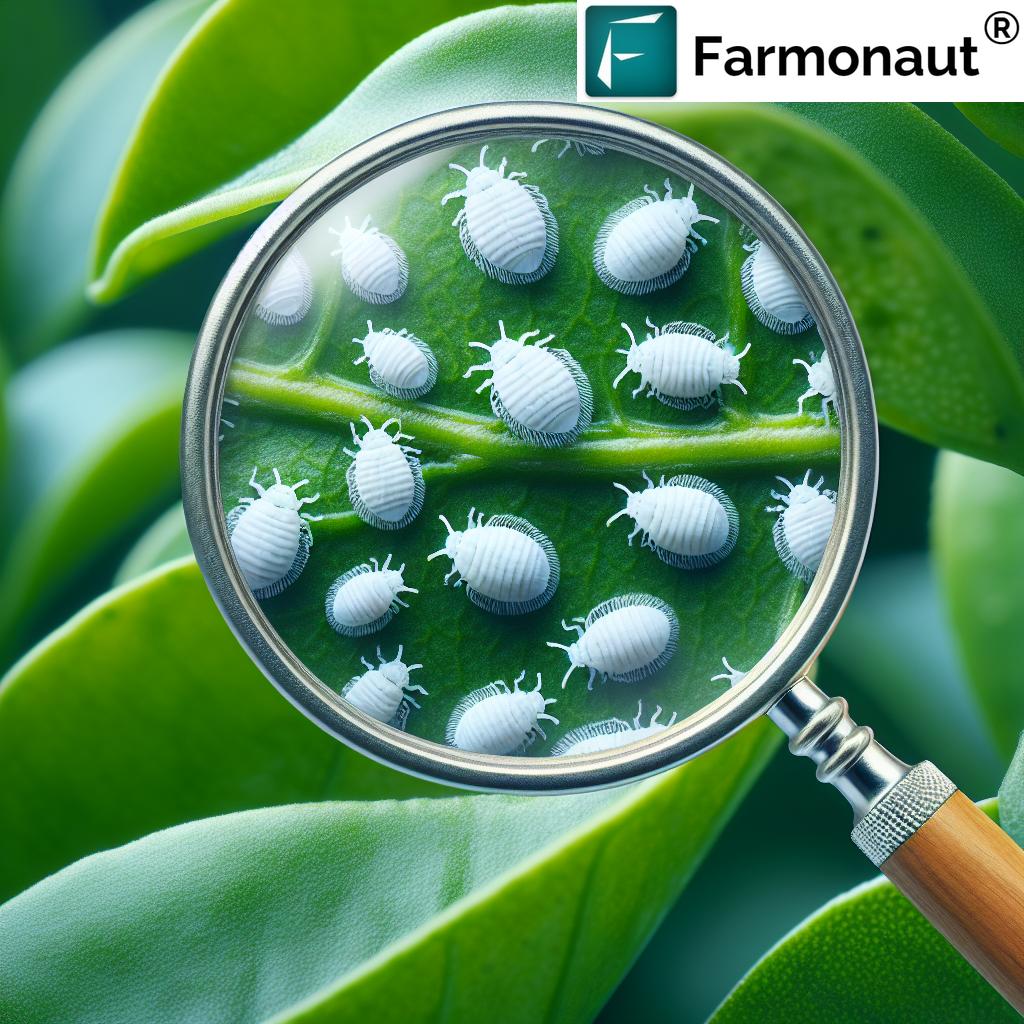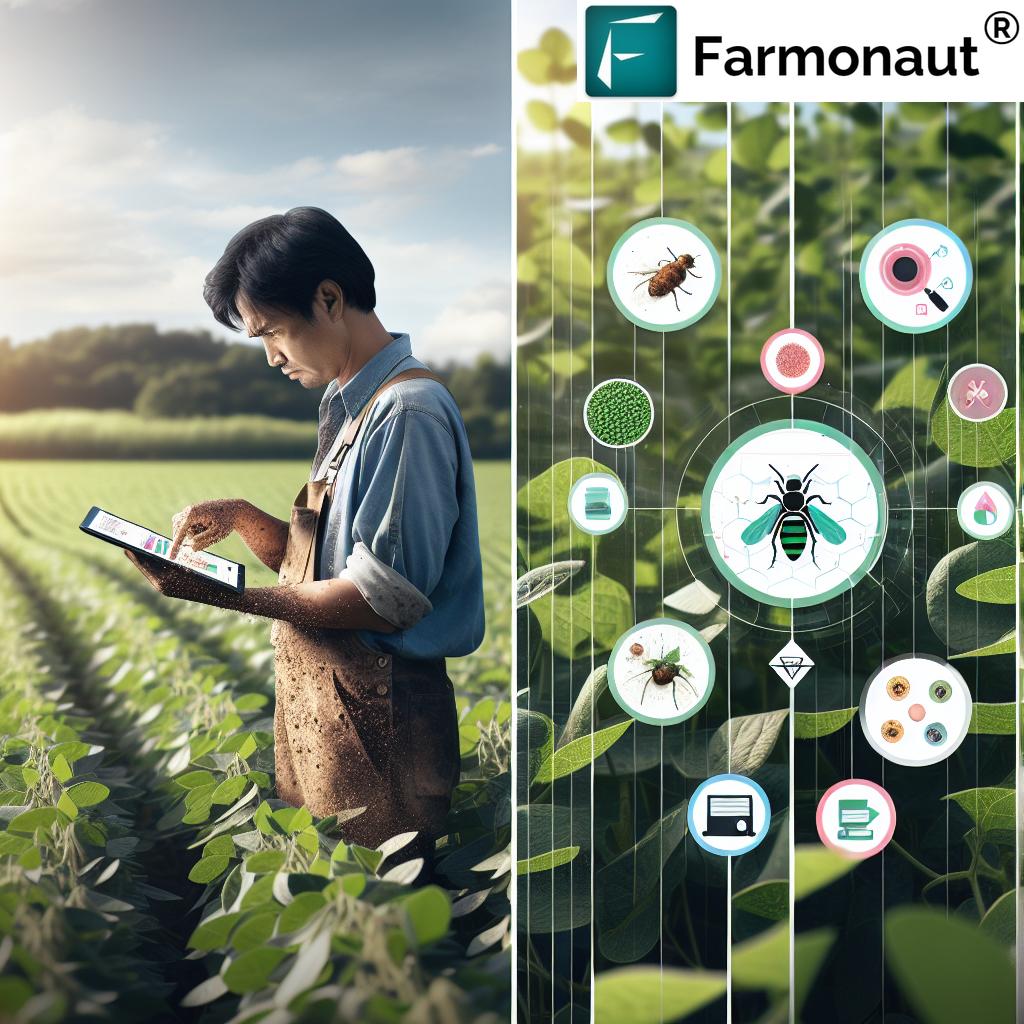Cannabis Cultivation Technology: 10 Game-Changing Hacks Boosting Efficiency & Sustainability
“LED lighting can boost cannabis yields by up to 30% compared to traditional lighting systems.”
Table of Contents
- Introduction
- Environmental Control For Cannabis Cultivation
- Lighting Innovations: LED Lighting For Cannabis
- Hydroponics and Aeroponics Cannabis Solutions
- Automation, Robotics, and Efficiency
- Data-Driven Cannabis Cultivation & Machine Learning
- Vertical Farming Cannabis Practices
- Sustainable Cannabis Farming Practices
- Blockchain Cannabis Supply Chain & Transparency
- Genetic Engineering & Autoflowering Varieties
- Integration of Nanotechnology in Cannabis
- Drones & Remote Sensing in Cannabis Cultivation
- Automated Harvesting Systems in Cannabis
- Technology Comparison Table
- FAQ
- Conclusion
Introduction: Cannabis Cultivation Technology – Transforming Farming From the Ground Up
Cannabis cultivation technology is revolutionizing the way we approach growing, harvesting, and managing this valuable plant. With the integration of automated systems, data-driven practices, environmental control, LED lighting, vertical farming, and blockchain, the entire cannabis industry is experiencing a wave of innovation. These advancements do more than enhance yield and efficiency—they elevate sustainability, ensure product quality, and inspire new standards for transparency and traceability.
At Farmonaut, we’re dedicated to delivering advanced, accessible tools that empower cultivators and organizations around the world. Our mission aligns with transforming traditional farming practices and fostering the adoption of technologies that optimize every stage—from climate management and nutrient delivery to harvest and supply chain transparency.
In this comprehensive guide, we explore ten game-changing hacks in cannabis cultivation technology. These solutions reshape every facet of the process, including environmental control, lighting, hydroponics and aeroponics, automation, data analytics, sustainable practices, blockchain for traceability, cutting-edge genetics, nanotechnology, drone-based monitoring, and automated harvesting systems. Let’s uncover how innovation in cannabis farming is opening new frontiers for efficiency, growth, and sustainability.
Hack #1: Environmental Control For Cannabis – Optimizing Growth Conditions
Maintaining optimal environmental conditions is foundational for successful cannabis cultivation. Cannabis plants require meticulously balanced temperature, humidity, and CO₂ levels to thrive. Modern environmental control for cannabis employs advanced sensors and automated control systems that monitor these variables 24/7.
- These systems regulate climate variables with high precision, automatically adjusting vents, fans, lights, and irrigation systems.
- With real-time data collection, cultivators can respond instantly to changes, reducing plant stress and disease pressure.
- An optimal environment ensures predictable growth cycles, leading to consistent, high-quality yield.
For example, Farmonaut’s satellite-based management tools provide remote crop health insights, helping growers to detect subtle shifts in field temperature and soil moisture before problems arise. This technology supports proactive decisions and efficient water and energy use—making environmental control smarter and more data-driven.
Key Benefits:
- • Reduced risk of unplanned crop loss
- • Consistent quality and yield
- • More efficient use of resources
- • Lowered operational and labor costs
Hack #2: Lighting Innovations – LED Lighting For Cannabis
The evolution of lighting systems in indoor cannabis operations is one of the most impactful technological advancements of the last decade. Traditional high-intensity discharge (HID) lamps have largely been replaced by LED lighting for cannabis, which provides full-spectrum light optimized for the plant’s various stages of growth.
- LEDs are energy-efficient, generating less heat and cutting down on cooling requirements for climate management.
- Light spectrum can be tailored for vegetative or flowering stages—optimizing photosynthesis and plant health.
- LED systems can be seamlessly integrated with automated controls, adapting intensity and duration based on real-time plant needs.
Did You Know? The switch to LED lighting can boost cannabis yields by up to 30% compared to traditional lighting systems.
This innovation slashes electricity usage, extends equipment longevity, and enhances the environmental footprint—making lighting upgrades essential for sustainable, high-yield cannabis cultivation.
Hack #3: Hydroponics and Aeroponics Cannabis Solutions
Modern cannabis cultivators are moving beyond soil—embracing innovative soil-less methods such as hydroponics and aeroponics cannabis systems.
- Hydroponics allows us to grow plants in nutrient-rich water, giving roots direct access to nutrients for faster, controlled growth cycles.
- Aeroponics suspends plant roots in air and delivers a fine nutrient mist, enabling highly efficient nutrient absorption and dramatically reducing water usage.
- Both methods allow us to fine-tune nutrient delivery, quickly address deficiencies, and mitigate soil-borne pests and diseases.
- Environmental and resource control is maximized, reducing waste and increasing plant health and yield.
Moreover, hydroponic and aeroponic operations can be integrated with automated irrigation, environmental controls, and real-time monitoring, revolutionizing how we approach cannabis farming.
To further optimize these methods, Farmonaut’s Carbon Footprinting solutions help cultivators track and minimize emissions, ensuring their operations stay sustainable and efficient at every stage—from nutrient mixing to waste management.
Hack #4: Automation and Robotic Systems – The Future of Cannabis Cultivation Automation
Labor-intensive tasks like irrigation, nutrient delivery, climate control, pest management, and harvesting can now be handled with remarkable efficiency through automated cannabis growing systems and smart robotics.
- Automated irrigation and feeding systems ensure plants receive water and nutrients precisely when needed, reducing waste and improving consistency.
- Robotic arms and automated platforms are increasingly used for complex tasks such as pruning, pest detection, and even harvesting, enabling scalability and consistency.
- Integrated cameras and sensors feed real-time data to management systems, allowing adjustments for plant-specific needs.
- This automation dramatically curtails labor costs, reduces human error, and creates a scalable, repeatable production model.
As part of an efficient operation, Farmonaut offers fleet and resource management tools for cultivators seeking to track equipment and logistics—enabling streamlined operations and cost reductions across their cannabis production cycles.
Hack #5: Data-Driven Cannabis Cultivation & Machine Learning
We’re living in a data-driven age—cannabis cultivation is no exception. Data analytics and machine learning enable growers to monitor, analyze, and optimize every element of their operations.
- Environmental data from sensors, satellite imagery, and automated systems are integrated and analyzed to predict trends, catch warning signs (such as pest infestations or nutrient deficiencies), and optimize inputs like water and fertilizers.
- Machine learning algorithms can recommend proactive changes in environmental controls, enhancing crop quality and yield consistency.
- This approach reduces crop loss, minimizes costs, and supports long-term resource management.
With platforms like Farmonaut, cultivators receive actionable insights on crop health, soil moisture, and field conditions—directly from their smartphone or computer. The result is precision farming that optimizes outcomes and sustainability.
“Vertical farming allows cannabis growers to use up to 70% less land than conventional cultivation methods.”
Hack #6: Vertical Farming Cannabis Practices
The pressure to maximize efficiency in limited urban and greenhouse space makes vertical farming cannabis a leading innovation. By cultivating plants in stacked layers, vertical farming:
- Enhances resource efficiency and enables year-round, climate-independent cultivation.
- Significantly reduces land footprint—up to 70% less land usage compared to traditional flat farming methods.
- Improves yields per square foot by capitalizing on three-dimensional growing space.
- Enables more effective environmental control, pest management, and nutrient delivery due to contained systems.
- Works synergistically with hydroponics, aeroponics, and LED lighting for a truly optimized, efficient, and scalable production model.
If you’re growing at scale or in urban environments, this approach unleashes impressive productivity gains while minimizing your environmental impact. Complement your vertical farming strategy with carbon footprinting insights to further boost sustainability.
Hack #7: Sustainable Cannabis Farming Practices
Sustainability is no longer optional; it’s a competitive advantage and industry imperative. Sustainable cannabis farming practices balance resource conservation, environmental health, and long-term economic viability.
- Water-efficient irrigation systems—such as closed-loop hydroponics and drip irrigation—minimize water usage and reduce run-off.
- Smart use of renewable energy (solar, wind) for powering lighting and automation reduces carbon footprint and operational costs.
- Integrated pest management favors biological controls and physical barriers, reducing dependency on synthetic pesticides.
Farmonaut’s carbon tracking features enable real-time monitoring of emissions, guiding cultivators towards more responsible and compliant operations. By implementing sustainability solutions, we build a reputation for environmental stewardship and meet evolving consumer and regulatory demands.
Additionally, Farmonaut’s crop loan and insurance verification solutions assist growers in accessing finance for sustainability upgrades, streamlining verification through satellite-based monitoring of sustainable practices.
Hack #8: Blockchain Cannabis Supply Chain & Transparency
Trust is everything in the cannabis industry, especially as regulations and consumer expectations rise. Blockchain cannabis supply chain technologies provide end-to-end traceability and complete transparency for every cannabis product.
- Every transaction, movement, and processing event is recorded on a decentralized ledger—accessible in real time to cultivators, processors, distributors, and retailers.
- This prevents fraud and inconsistencies in quality, supports regulatory audits, and builds consumer trust by enabling “seed to sale” verification.
- Blockchain-based systems can also prove the sustainability, origin, and authenticity of cannabis products—a must-have in today’s competitive markets.
Integrating blockchain with precision farming, Farmonaut’s product traceability platform enhances trust and compliance for businesses and governments who demand robust cannabis supply chain oversight.
For technical teams and developers, our API and API Developer Docs allow seamless integration of blockchain and satellite data insights directly into your backend systems.
Hack #9: Genetic Engineering & Autoflowering Varieties
Customization is now possible at the genetic level—genetic engineering and autoflowering cannabis varieties empower cultivators to select for traits such as increased cannabinoid content, resilience against environmental stresses, and rapid harvest cycles.
- CRISPR and precise gene editing methods produce strains that are inherently resistant to pests, drought, and disease.
- Autoflowering varieties shift to flowering stage based on age rather than light, allowing for multiple annual harvests—even in northern latitudes or short growing seasons.
- This leads to more reliable crop planning, increased productivity, and supports supply consistency year-round.
While genetic customization was once reserved for large corporate breeders, today’s technology democratizes access—allowing farms of any size to cultivate strains designed for their markets, conditions, and customer needs.
Coupled with data analytics and remote monitoring, these innovations ensure that every seed planted is the start of a more productive, resilient crop cycle.
Hack #10: Integration of Nanotechnology in Cannabis
Nanotechnology is breaking new ground in irrigation, nutrient delivery, and even cannabis plant health. Smart drip and nanobubble systems deliver water and oxygen directly to the roots in precisely controlled doses—based on real-time soil moisture and climate data.
- Reduced water usage and minimized runoff, supporting compliance with strict water management regulations.
- Maximized nutrient absorption for more efficient root uptake, promoting rapid, healthy plant growth.
- Improved soil structure and plant oxygenation, resulting in stronger, more resilient cannabis crops.
These technological advancements layer seamlessly with environmental control systems and analytics—for granular, adaptive management that pushes cannabis cultivation efficiency even further.
Bonus Hack: Drones & Remote Sensing In Cannabis Cultivation
Aerial drones equipped with advanced sensors are transforming large-scale and open-field cannabis cultivation by providing real-time data on plant health, soil conditions, and environmental factors.
- Quick assessment of entire crop areas enables timely interventions for pest infestations and nutrient deficiencies.
- High-resolution imagery and analytics support yield estimates, harvest planning, and regulatory compliance.
- Integration with satellite-based monitoring—like Farmonaut’s platform—enables multi-layered, data-rich farm management at any scale.
These advances position drones and remote sensing as essential for optimizing large, dispersed, or high-value cannabis operations.
Automated Harvesting Systems for Cannabis Cultivation
Automated harvesting systems streamline one of the most labor-intensive phases of cannabis production. Robotic trimmers and integrated harvesters use computer vision, programmed cutting, and sorting technology to:
- Reduce manual labor costs
- Enhance harvest consistency and quality
- Accelerate turn-around, ensuring optimal harvest timing for maximum cannabinoid and terpene content
As automation advances, these systems are becoming increasingly accessible to mid-sized cultivators and cooperatives—enabling scalability and further optimizing the supply chain.
Technology Comparison Table: Cannabis Cultivation Technology Hacks
| Technology/Hack Name | Key Function | Est. Yield Improvement (%) | Est. Cost Savings (%) | Sustainability Impact | Implementation Difficulty |
|---|---|---|---|---|---|
| Environmental Control Systems | Automated temp/humidity/CO₂ regulation | 20-30 | 10-20 | High | Moderate |
| LED Lighting Solutions | Energy-efficient, spectrum-tuned lighting | 20-35 | 15-25 | Medium-High | Moderate |
| Hydroponics & Aeroponics | Soil-less, high-precision nutrient delivery | 25-40 | 20-30 | High | Complex |
| Cannabis Cultivation Automation & Robotics | Automates irrigation, labor, and harvesting | 15-25 | 20-35 | Medium | Complex |
| Data Analytics & Machine Learning | Predictive management & decision support | 15-20 | 10-15 | Medium-High | Moderate |
| Vertical Farming | Multi-level space optimization | 35-50 | 25-40 | High | Moderate |
| Sustainable Practices | Reduces resource, water, and chemical usage | 10-20 | 10-30 | High | Easy-Moderate |
| Blockchain Integration | Supply chain transparency & traceability | N/A | 10-20 | Medium-High | Easy-Moderate |
| Genetic Engineering & Autoflowering | Customized, robust crop traits | 10-25 | 10-20 | Medium | Complex |
| Nanotechnology | Efficient nutrient & oxygen delivery | 10-15 | 10-20 | High | Moderate |
Farmonaut Subscription Options
FAQ: Cannabis Cultivation Technology & Farmonaut Solutions
1. What is the role of environmental control in cannabis cultivation technology?
Environmental control systems automate and optimize temperature, humidity, light, and CO₂ levels. This ensures uniform crop quality, consistent yields, and efficient use of resources—facilitating reliable year-round cannabis production.
2. How does data-driven cannabis cultivation differ from traditional methods?
Data-driven cultivation integrates sensor data, satellite imagery, and analytics for real-time insights. This proactive approach predicts pest issues and nutrient needs ahead of time, minimizing crop loss and improving resource allocation.
3. Why is blockchain important for the cannabis supply chain?
Blockchain offers transparent, immutable record-keeping across the cannabis supply chain. It helps ensure product authenticity, supports regulatory compliance, and boosts consumer confidence through complete traceability.
4. What makes Farmonaut unique among cannabis cultivation technology providers?
Farmonaut stands out by offering affordable, satellite-based precision agriculture solutions for growers and agribusinesses globally. Our platform combines AI-driven crop health analytics, blockchain-based traceability, and resource management in a modular, user-friendly system.
5. Can small and mid-size growers access advanced cannabis cultivation technology?
Yes! Solutions like Farmonaut are accessible via web, android, and iOS apps, as well as API integration—making it easy for growers of any scale to benefit from advanced analytics, remote monitoring, and supply chain traceability.
6. How do I get started with Farmonaut’s app and features?
You can get started with Farmonaut’s web app here, or download the Android or iOS app for direct access to satellite-based crop monitoring, AI-driven advisory, and more.
Conclusion: The Future of Cannabis Cultivation Technology
The fusion of environmental control, precision LED lighting, advanced hydroponics, automation, data analytics, and blockchain is reshaping cannabis cultivation. By integrating these innovations, we achieve more efficient, sustainable operations—delivering higher yields, improved product quality, and rock-solid transparency at every stage of the supply chain.
With Farmonaut’s suite of solutions, cultivators and agribusinesses from every corner of the globe can harness these technological advancements—making precision agriculture accessible, actionable, and affordable. Whether you’re optimizing nutrient cycles, seeking end-to-end traceability, or aiming to reduce your carbon footprint, the tools to do so are now at your fingertips.
Ready to take your cannabis farm to the next level?
- Access Farmonaut’s Crop Health Monitoring Web App
- Enhance Blockchain Traceability for Your Cannabis Supply Chain
- Track and Reduce Your Farm’s Carbon Footprint
- Integrate Farmonaut’s API Into Your Operations
Farmonaut stands as your partner on the path to innovative, sustainable, and data-driven cannabis cultivation. By leveraging these game-changing hacks, we all move the industry forward—towards a greener, more prosperous future.


